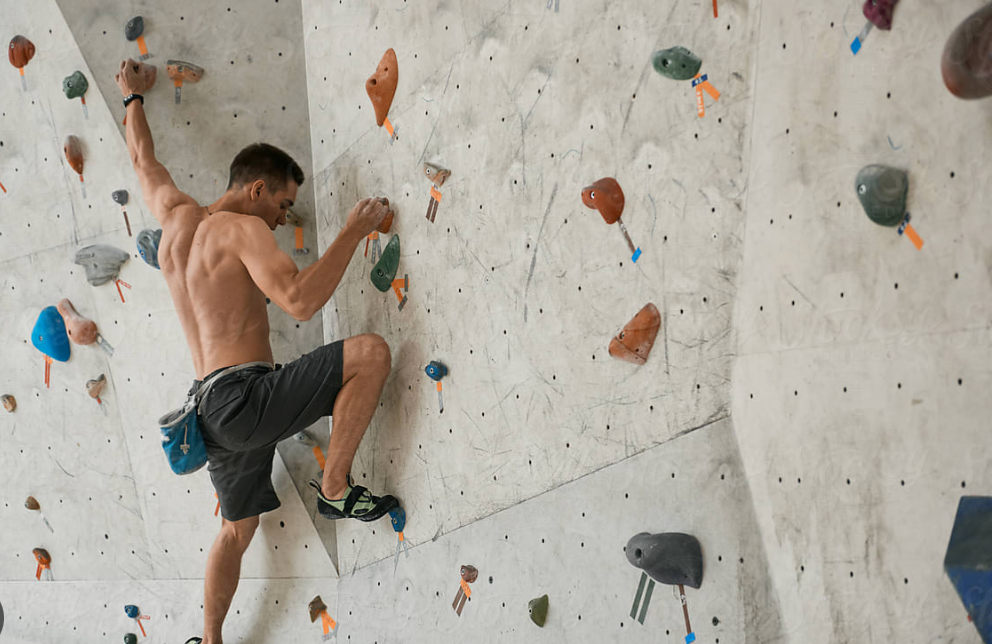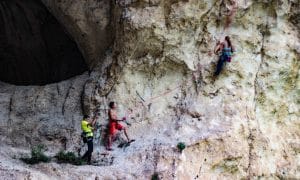
Important tips on bouldering and marijuana
Bouldering and climbing are experiencing a huge popularity trend – can cannabis help with this popular activity?
Just 5 years ago, climbing and bouldering were niche activities for passionate athletes. But now it's become a fun, body-strengthening urban activity and a multi-billion dollar industry. Cities, towns and cruise ships now have climbing gyms and their popularity has skyrocketed. North American climbing gyms alone reached nearly a billion dollars last year, not counting outdoor, equipment and other markets. Its popularity means it fits in with other lifestyle options, so here are important tips on bouldering and marijuana.
RELATED TOPICS: Marijuana and exercise, all part of a healthy cannabis life
France is the birthplace of modern bouldering. Pierre Allain, a French climbing pioneer of the mid-20th century, loved the forest of Fontainebleau and was one of the first to see bouldering as a discipline in its own right within the sport of climbing, rather than just a training tool. He developed climbing shoes with rubber soles that gave climbers more grip on the rock – a revolution that helped bouldering gain recognition as a legitimate sport. Around the same time in the US, gymnast and climber John Gill approached bouldering with an emphasis on strength, balance and dynamic movements. He is considered the father of modern bouldering and introduced the concept of “clean climbing” – leaving no marks on the rock – which has inspired generations of climbers to respect and protect the natural environment.
An anonymous survey of professional climbers by Climbing Magazine a few years ago found that most said they used cannabis for recovery, while others said they sometimes climbed while under the influence of cannabis. A thoroughly researched study by scientists, including members of the World Anti-Doping Agency and the National Institute on Drug Abuse, found that “using cannabis as a doping agent does not in any way help you gain a competitive advantage.” However, the study also highlighted how cannabis can help athletes deal with anxiety in stressful situations – there are many stressful situations in climbing – and “plays an important role in erasing fear memories” from traumatic sporting events, such as taking a hard beating or something more serious.
RELATED TOPICS: Science: Cannabis doesn't make you lazy after all
“Cannabis improves sleep and post-event recovery, reduces anxiety and fear, and helps forget negative events such as serious falls, etc.,” the researchers wrote. “Cannabis improves sensory perception, decreases respiratory rate, and increases heart rate; increased bronchodilation may improve tissue oxygenation.”
 Photo by Tom Wheatley via Unsplash
Photo by Tom Wheatley via Unsplash
Marijuana can also help you work out at the gym. A study from the University of Colorado concluded that using marijuana before a workout “increases motivation” and “improves post-workout recovery.” Recovery is hugely important, especially in sports that place a lot of strain on the body, like rock climbing. Professional athletes in football, basketball, hockey, martial arts, and even golf have all advocated using cannabis as a recovery tool, with some saying CBD is sufficient.
RELATED TOPICS: How to use CBD for better sleep
Even more important than in these other sports, however, is safety in climbing. Combining marijuana and climbing should be done with serious intent and without harming belayers or other climbers. An online survey by Training Beta, a climbing training website, examined how readers feel about the relationship between climbing and cannabis. Of the 1,462 respondents, 47% said they were uncomfortable with high belayers, and 46% responded that it depends on the environment and the person belaying them.

Post a comment: